This piece is part of a series titled “Nonstate armed actors and illicit economies in 2022” from Brookings’s Initiative on Nonstate Armed Actors. The 2022 outlook for both the rule of law and public safety in Mexico and meaningful U.S.-Mexico security cooperation remains bleak, writes Vanda Felbab-Brown as she discusses her findings from recently spending several weeks in various parts of Mexico researching the evolution of crime and security policies. This piece was originally published by Mexico Today.
It might seem that 2022 is starting off with important positive news about the crime and security situation in Mexico. The Mexican government announced that homicides declined by 3.6% from the previous year to 33,308, just below the 33,739 in 2018 when Andrés Manuel López Obrador became president. And in December, the new U.S.-Mexico Bicentennial Framework for Security, Public Health, and Safe Communities went into effect, replacing the Mérida Initiative that López Obrador intensely disliked while his administration severely minimized U.S.-Mexico security cooperation.
Yet, the 2022 outlook for both the rule of law and public safety in Mexico and meaningful U.S.-Mexico security cooperation remains bleak. In October and November, I spent several weeks in various parts of Mexico researching the evolution of crime and security policies. The picture is not good.
The decline in homicides is welcome. But the size of the decline is just noise in the tempo of Mexico’s criminal violence. The reduction is not fundamentally due to improved security policies. Mexico’s law-enforcement forces still lack incapacitation and deterrence capacities. Brazen homicides persist at unacceptable levels. Their ebb and flow largely reflect choices and tit-for-tat responses by criminal groups toward one another.
Reductions in fighting, such as in Michoacán’s Apatzingán or Guerrero’s Acapulco where I conducted fieldwork, occurs mainly because a particular group or criminal alliance manages to establish temporary territorial control, a “narcopeace”: be it Cárteles Unidos in that part of the Tierra Caliente, or Caro Quintero’s and Los Chapitos’ branches of the Sinaloa Cartel in high-value extortion and drug trafficking in Acapulco. Elsewhere, they have to live with sharing, like the Sinaloa Cartel and Cartel Jalisco Nueva Generación (CJNG) do in the fentanyl and meth precursor hub Lázaro Cárdenas.
Nor do reductions in murders mean other forms of violence, such as extortion, or criminal groups’ control over territories and people, have lessened. In much of Michoacán, Guerrero, Tamaulipas, and Veracruz, local politics, economics, and much of people’s everyday life is arbitrated by the narcos. As a government official in Tierra Caliente told me: “Frankly, public security here, all life really, is totally managed by the narcos.”
Yet the criminal groups’ capacities to hold turf often remains flimsy, with groups like CJNG brazenly seeking to conquer entire territories with drone-mounted bombs, and groups like the Sinaloa Cartel taking over legal and illegal economies and politics in a more buttoned-down and less blatant manner, but no less systematically.
As my fieldwork showed, in Baja California Sur, Baja California, and Sinaloa, criminal groups, often the Sinaloa Cartel, are muscling their way into new economies, systematically seeking to dominate both legal and illegal fishing, fish processing, and seafood sales along the entire vertical supply chain. Legal and illegal fishermen and entire associations and industries feel they have no backup from the Mexican government to resist the narcos’ takeover.
The overarching bipolar rivalry between the Sinaloa Cartel and CJNG spans not just Mexico but violently all the way to Colombia and non-violently into the Asia-Pacific. Underneath that macro-war, many violent micro-conflicts play out in Mexico, as smaller criminal groups fight over drug, extortion, and other criminal markets and seek to control local politicians and populations.
Areas of violent contestation, such as Zacatecas or San Luis Potosí, can become almost anarchical with violence.
Self-styled militias, sometimes fronts for rival criminal groups, other times with great proclivity to slide into many facets of criminality, persist and proliferate as the government looks on.
To various degrees, the criminal groups build political power by intimidating and bribing government officials, and obtain political capital with local populations by giving social handouts and organizing narco courts to arbitrate disputes.
For the past two decades, criminal groups have violently meddled in Mexico’s elections, particularly at the municipal and state level. But the 2021 midterms showed to an unprecedented degree that the criminal groups are no longer satisfied to coopt elected officials. Now they seek to influence with violence and money who can run and win to begin with.
The Mexican government’s response remains deeply troubling — mostly a hope the criminals will sort it out among themselves. Whether in high-value targeting, countering violence and criminality in natural resources, or suppressing robberies and extortion, Mexico’s various military and law enforcement forces are instructed to only undertake operations without the visible use of force — even when criminal militias take over new territories and declare autonomy, or cartels bomb local populations.
When forces such as the Mexican Army (SEDENA) and Navy (SEMAR) or the National Guard, now numbering perhaps 100,000, are deployed, they are mostly sent to patrol the streets without active operations against local criminal groups.
Unlike the Federal Police which the López Obrador administration dismantled, the National Guard is nominally supposed to be stationed in a locality permanently. That’s not always the case. Most importantly, the force was conceived as a backup to the state police, not a first responder. And indeed, it doesn’t respond. As a security official in the Tierra Caliente explained to me, the objective of the deployments of the National Guard or joint patrols is not to fight the criminals, or even to deter them: “We send the National Guard in joint patrols with state police or the military to stand on the street. Seeing them with arms and trucks gives people confidence.” Well, it didn’t to the local people with whom I had a chance to speak. As a lawyer there put it: “The National Guard are the most expensive mannequins in Mexico.”
The National Guard, like SEMAR and SEDENA, lacks an investigative authority. Thus, they can act against crime and arrest people only when they see crime happening in flagrancia. And the state police forces can only investigate ordinary crime, not organized crime. Yet the dismantling of the Federal Police also led to a profound reduction in the number of investigators and investigative capacity in Mexico — by some 70-75%, Mexican lawyers and security officials estimated in conversations with me.
No wonder, the effective prosecution rate for homicides in Mexico continues to hover around 2%.
The López Obrador government blames poor security on state authorities, and state authorities blame it on municipal ones. But the federal government has dramatically cut budgets to both and thus gutted the already often-inadequate local capacities, even though its own 2019 security strategy centered on relying on municipal police for security.
At all levels, police reform has mostly stalled. Occasionally, though, such as in Oaxaca, or Chihuahua City, local governments have succeeded in improving the effectiveness of municipal police forces.
Instead of police reform, López Obrador has intensified militarization of public life in Mexico — not just in security, but also in the economic domain. His administration has given SEDENA and SEMAR responsibilities for custom collection and awarded them contracts for building airports, luxury apartments, and presumed critical infrastructure (sometimes foolishly environmentally-damaging infrastructure like the Mayan Train), while promising to exempt them from all kinds of oversight.
López Obrador has cut budgets and personnel to many Mexican institutions and left them with minimal regulatory, oversight, and minimal capacities. Amidst this systematic weakening of Mexico’s institutions, the effort by López Obrador and his Attorney General Alejandro Gertz Manero to gut and reverse Mexico’s judicial reforms toward an accusatorial system and weaken judicial independence are among the most detrimental.
Instead of using force and judicial prosecution, López Obrador seeks to reduce crime in Mexico through socio-economic anti-crime programs, part of his overall vastly popular redistribution strategy for Mexico’s many poor and marginalized. A socio-economic component to enable local populations access to legal income is important, though not a replacement for good policing. And from the Sembrando Vida program to grow fruit trees to vocational programs for youth at-risk of succumbing to criminality, these López Obrador administration programs have been riddled with problems. In one such program I encountered in Michoacán, for example, teenagers were paid by the government to receive training as hairdressers while the hairdressers were paid for the teaching. But the boys merely paid off or intimidated the hair salons into certifying the boys’ participation in the training without actually attending it. Both the boys and their hairdresser trainers pocketed the government money and went about their lives, criminal or otherwise, as before.
Under the Mérida Initiative, the U.S. often provided the crucial and only anti-corruption, anti-collusion oversight in Mexico’s security strategies and tactical operations as well as a stimulus and reinforcement to Mexico’s will to take on criminal groups and the lack of rule of law. The Bicentennial Framework is unlikely to restore that. Details of what bilateral cooperation will be preserved are supposed to emerge from the U.S.-Mexico working groups this month.
But what I heard from interlocutors in Mexico was a most problematic vision of the U.S. Mexico Bicentennial Framework by the Mexican government — namely, that the United States should only take care of its own territory by reducing drug demand and retail in the United States and the flows of drug money and weapons to Mexico, while Mexico will do whatever it wants, without U.S. input, in Mexico. Even if that means succumbing to the narcos.
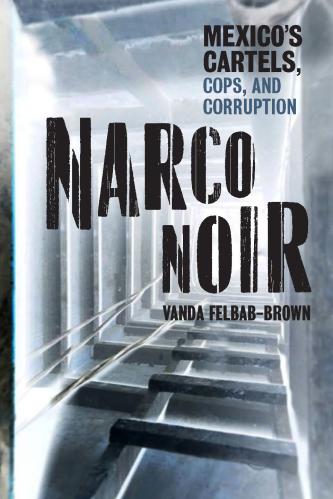
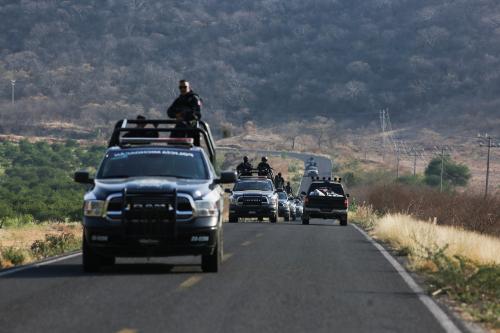

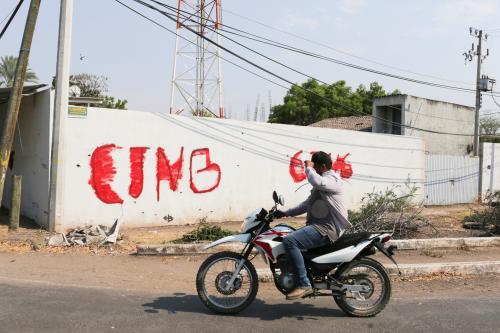

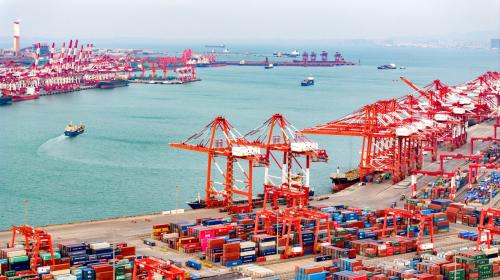
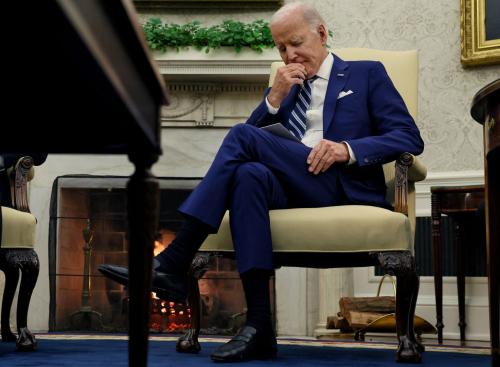

Commentary
Crime and anti-crime policies in Mexico in 2022: A bleak outlook
January 24, 2022